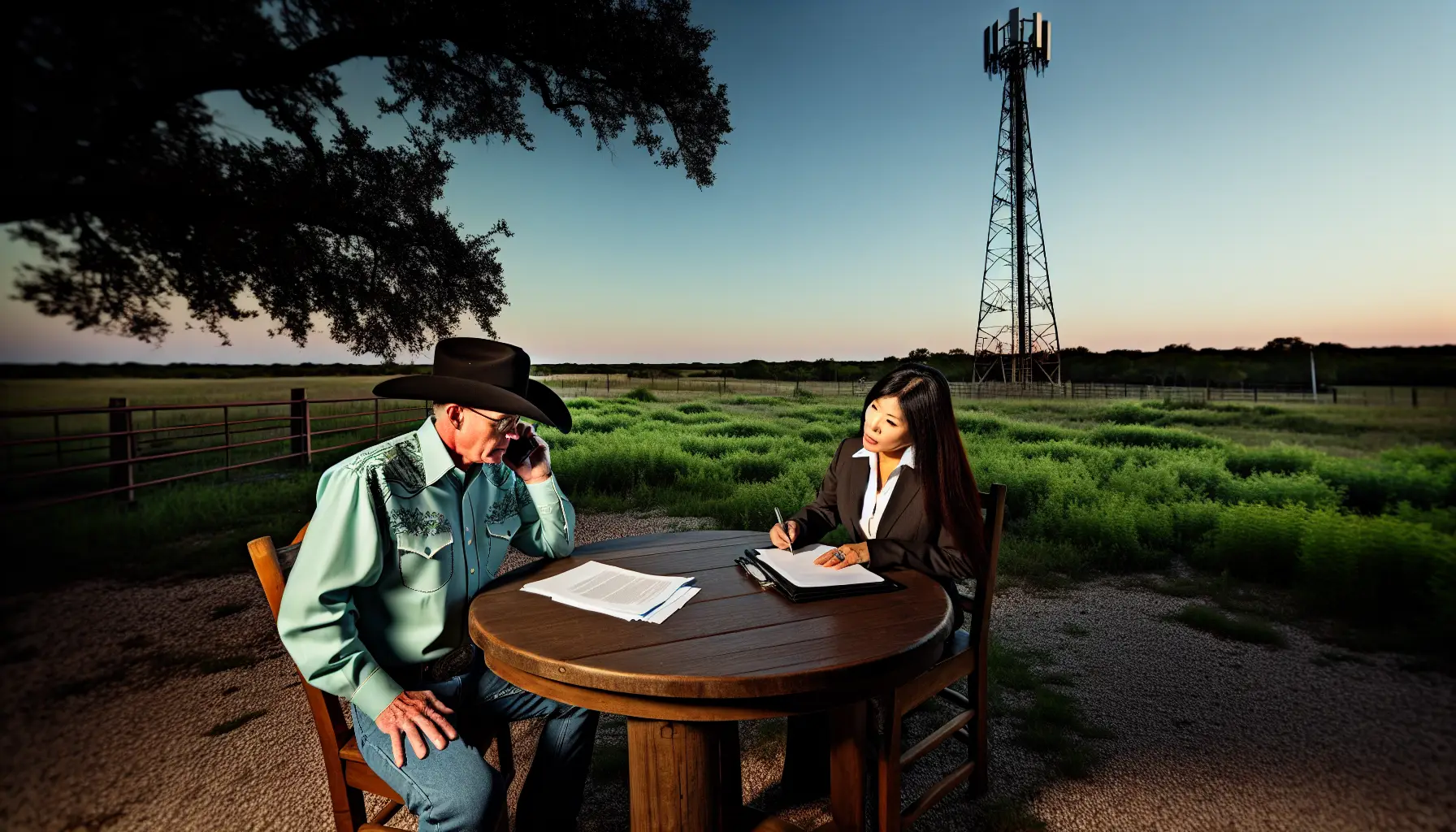Handling real estate deeds might seem straightforward, but even the smallest mistake can lead to significant complications. A property deed is the key legal document that transfers ownership from one individual to another. Whether you are buying, selling, or managing rural land, ensuring this document is error-free is crucial. Issues like forgotten attachments, unclear language, or improper notarization can delay transactions or escalate to legal disputes. Knowing the most common property deed mistakes in Texas and how to avoid them can save you both time and money.
In This Article:
What Is a Real Estate Deed?
A real estate deed represents the legal framework for transferring property ownership. It includes important parts like the names of the grantor (seller) and grantee (buyer). It also has a clear legal description of the property and the required signatures. Given its importance, even minor errors can question the validity of ownership, leading to disputes or delays. A property deed is an important document. It shows who owns a piece of real estate. It also outlines the rights and responsibilities of the owner.
What Does a Property Deed Look Like in Texas?
Many people ask, what does a property deed look like in Texas? A typical Texas property deed includes:
- The names of the buyer and seller
- A precise legal description of the property
- Signatures from the involved parties
- Notarization and, in some cases, witness signatures
- A county clerk’s recording stamp
Types of common property deed
Different situations call for different types of deeds. Understanding their unique uses can make property transactions smoother:
- Warranty Deed: Provides the buyer with maximum protection, guaranteeing no outstanding claims or liabilities on the property.
- Quitclaim Deed: Transfers the seller’s interest in the property without warranties, commonly employed for inter-family transfers. However, Texas law generally discourages quitclaims due to their impact on title insurance and potential legal complications.
- Special Purpose Deeds: Used for specific situations, like deeds of trust or executor’s deeds required for settling estates.
Choosing the appropriate deed type depends on the specifics of the transaction. Consulting a knowledgeable resource such as a real estate lawyer for Texas disputes ensures the right options are utilized for your situation.
Common Errors in Real Estate Deeds in Texas
Understanding the most frequent mistakes in Texas real estate deeds is crucial for ensuring a legally sound and dispute-free transaction. These common deed errors carry legal consequences that can delay, complicate, or even invalidate a property transfer.
Incorrect Legal Descriptions of the Property
A legal description is far more than a street address—it outlines the property’s exact boundaries, dimensions, and parcel information. Inaccurate descriptions, such as incorrect lot numbers or mismatched survey details, can render the deed legally unenforceable. This is especially true in rural areas of Texas where boundaries may not be clearly marked.
If a deed mistakenly references the wrong parcel, it can lead to property boundary disputes, title confusion, and potentially lengthy litigation. In worst-case scenarios, buyers may receive property they never intended to purchase.
To prevent this, always verify legal descriptions against official county records or consult a licensed Texas land surveyor to confirm details before recording.
Missing Exhibits, Easements, or Supporting Attachments
Many Texas deeds require additional documentation—often referred to as exhibits—such as maps, recorded plats, utility easements, or right-of-way agreements. These attachments support the deed by outlining specific conditions or access rights.
Omitting exhibits can make key portions of the deed vague or legally unenforceable. For instance, if an easement granting shared driveway access is referenced but not attached, it could lead to future disputes or loss of access rights.
Best practice: Create a checklist of all referenced exhibits and ensure each is attached and labeled correctly before submitting the deed.
Ambiguous or Vague Language in the Deed
Clear, concise language is essential in any legal document, especially a deed. Ambiguities—whether related to property use, access rights, or mineral ownership—can lead to serious legal disputes.
For example, saying “the grantor conveys mineral rights if applicable” is dangerously vague and could result in court challenges. This is particularly problematic in Texas, where mineral rights often carry significant value and may be separately owned or leased.
A Texas real estate attorney should always review deed language, especially in cases involving shared property, oil and gas interests, or land with existing rights of use.
Notarization Errors or Omissions
In Texas, a deed is invalid unless it’s properly notarized. The notary confirms the identity of the signers and that the signing was done willingly. Missing or incorrect notary information—such as an absent seal, an unsigned notary block, or a signature not witnessed properly—can result in the deed being rejected or challenged.
These errors can prevent the deed from being recorded and open the door to fraud or conflicting ownership claims. To avoid this, ensure that all deed signings are done in the presence of a licensed Texas notary, and review the document for completeness before submission.
Failure to Record the Deed with the County Clerk
After execution and notarization, the deed must be filed with the appropriate county clerk’s office to complete the transaction officially. Until that happens, ownership is not formally recognized under Texas law.
Unrecorded deeds can cause major issues, including:
-
Uncertainty over who legally owns the property
-
Risk of the property being sold again fraudulently
-
Difficulty securing title insurance or financing
In Texas, the first properly recorded deed generally prevails in legal disputes. Always record the deed promptly and request confirmation from the county clerk to ensure your ownership rights are secure.
How to Avoid Common Property Deed Errors
Being proactive can go a long way. Here are some practical steps to keep your real estate transaction error-free:
Double-Check Legal Descriptions
Meticulous review of the property’s legal description can prevent disputes. Verify boundaries and property details with official records or conduct a property deed search to confirm accuracy
Ensure Completion of Exhibits
Create a checklist of all required exhibits, like easements or maps, and cross-reference them with the parties involved. Reviewing these details ensures accuracy and avoids last-minute complications.
Opt for Clear, Specific Wording
When drafting a deed, ensure the language used is precise and leaves no room for misinterpretation. Highlight and address all potential concerns upfront to avoid future disputes. This is especially important in transactions involving oil and gas legal guidance under Texas law.
Don’t Neglect Notarization and Recording
Notarization is crucial, as it adds a layer of authenticity to the transaction. Once the deed is properly signed and notarized, recording it promptly at the correct county clerk’s office ensures its legal enforceability.
Fixing Errors in Texas Real Estate Deeds
Despite your best efforts, mistakes sometimes happen. Fortunately, Texas provides a practical mechanism to correct these through “correction instruments.” These legal documents allow you to amend errors in an already recorded deed without a complete redo.
Steps to Use Correction Instruments
- Pinpoint the Mistake: Identify whether it is a simple typo or a more complex issue like an incorrect legal description.
- Draft the Correction Instrument: This legal document specifies the exact adjustments needed to amend the original deed.
- Obtain Signatures and Notarization: Ensure all related parties sign the correction instrument and have it notarized to validate its legal authority.
- File with the County Clerk: Submit the corrected document to the same county office where the original deed was recorded.
- Retain Copies: Always keep a personal record of the corrected deed for future reference.
In cases of significant errors, such as disputes involving ownership or boundary lines, working with a Texas deed correction attorney ensures the issue is resolved comprehensively.
Conclusion
Mistakes in real estate deeds, whether involving legal descriptions, missing notarization, or unclear language, can cause delays and disputes. Thorough reviews, understanding of notarization and recording requirements, and proactive measures like correction instruments play a vital role in safeguarding transactions. For those navigating these complexities, Daughtrey Law Firm offers expert guidance to protect your property interests and avoid legal pitfalls.
Frequently Asked Questions (FAQs)
How to change the name on a property deed in Texas?
To change the name on a property deed in Texas, you must create and file a new deed—typically a general warranty deed, special warranty deed, or quitclaim deed—with the county clerk’s office in the county where the property is located. The deed must contain an accurate legal description of the property, be signed by the current owner (grantor), and notarized. After filing, the updated deed becomes part of the official public land records. This process is commonly required after a name change due to marriage, divorce, or inheritance.
How to combine two property deeds into one in Texas?
To merge two property deeds into a single ownership record in Texas, you need to draft a new deed that consolidates both parcels into a unified legal description. This deed must include the grantor and grantee names, describe both properties in full, and be notarized before being filed with the county clerk’s office where the properties are located. Combining deeds is especially useful when managing adjacent lots or simplifying estate planning and property title records.
How to deed property in Texas?
To legally deed property in Texas, follow these four essential steps:
- Select the correct type of deed (such as a warranty deed, quitclaim deed, or gift deed).
- Prepare the deed document with the full legal property description, names of grantor and grantee, and any relevant terms.
- Sign the deed in front of a licensed notary public.
- File the notarized deed with the county clerk’s office in the jurisdiction where the property is located.
This process officially transfers property ownership and becomes part of the Texas public land records.
How to find a property deed in Texas?
To locate a property deed in Texas, search the public records database maintained by the county clerk’s office where the property is situated. Many counties now offer online access to land and deed records, making it easier to retrieve copies of recorded property transactions. You can search by property address, owner name, or legal description. If digital access is not available, a visit to the county courthouse may be necessary.
How to get a property deed in Texas?
To obtain a certified or unofficial copy of a property deed in Texas, contact the county clerk’s office where the deed was originally recorded. Some counties provide online portals for digital document access, while others may require an in-person visit or a formal records request. This is useful for verifying ownership, selling property, or conducting title searches.
How to gift deed property in Texas?
A gift deed is a legal tool for transferring property ownership without financial compensation. To create one in Texas:
- The grantor must draft a gift deed that includes the legal description of the property and both parties’ names.
- The grantor signs the deed before a notary public.
- The signed and notarized deed is then filed with the county clerk in the appropriate county.
Once filed, the transfer becomes part of the public record, officially granting the recipient legal ownership.
How to transfer a property deed in Texas?
To transfer a property deed in Texas:
- Choose the appropriate deed type (e.g., warranty, quitclaim, or special warranty deed).
- Fill in the deed with accurate details, including the grantor and grantee, property address, and legal description.
- Sign the deed before a notary public.
- File the notarized deed with the county clerk’s office where the property is located.
This completes the legal transfer of property ownership, ensuring the grantee is recorded as the new owner in the Texas real estate records.
What does a property deed look like in Texas?
A standard Texas property deed includes the following:
- Names of the grantor (seller) and grantee (buyer)
- The legal description of the property
- Signatures of all required parties
- A notary acknowledgment section
- A recording stamp from the county clerk’s office after filing
Visually, it resembles a legal document with formal formatting, structured paragraphs, and notary seals, and it becomes a permanent part of the county’s real property records once filed.











